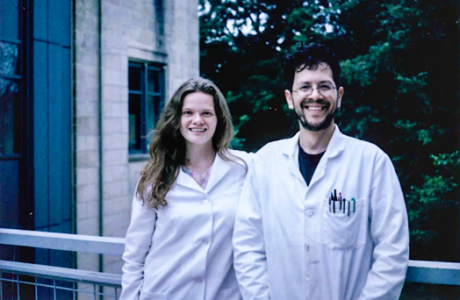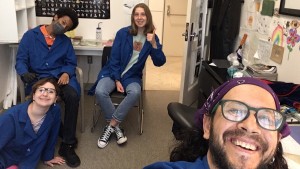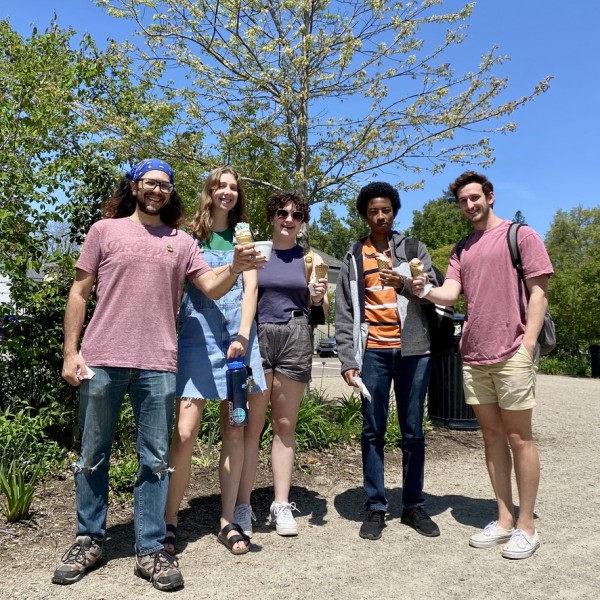Six years after graduating from Kenyon with a double major in biochemistry and neuroscience, Shannon Wright ’16 learned a chemistry paper listing her as an author had been published.
“It was funny to see my undergrad work come out after I had already graduated from my PhD program,” said Wright, now a postdoctoral associate at the Massachusetts Institute of Technology. But such is the nature of research.
The paper, titled “An efficient synthesis of the inimer gamma-(2-bromo-2-methylpropionate)-epsilon-caprolactone (BMPCL),” is coauthored by a mix of recent Kenyon alumni and students. It came out of years of work in the lab of Yutan Getzler, professor of chemistry.
 In undergraduate labs, research can move at a slow pace, with different generations of students working on the same project. “The point of all the chemistry we did in this paper was to help us develop the techniques to build a stockpile of molecules that we could use in the next step of the project,” Getzler said. “Given the way that undergraduate research operates, it was going to take a long time to build up that stockpile.”
In undergraduate labs, research can move at a slow pace, with different generations of students working on the same project. “The point of all the chemistry we did in this paper was to help us develop the techniques to build a stockpile of molecules that we could use in the next step of the project,” Getzler said. “Given the way that undergraduate research operates, it was going to take a long time to build up that stockpile.”
Wright worked to perfect many of those techniques during her senior year, spending hours in the lab on developing a monomer synthesis and graduating “on the cusp of finishing” the research required for the paper, said Getzler. Finding another student to build on that work took some time. A year of introductory classes, followed by a year of lab experience, is what it typically takes for students to build up the necessary chops for diving into the “hard things” Getzler pursues in his research. “It's ultimately a skilled craft,” he said. Beyond the intellectual work of equations and memorization, one needs steady hands and plenty of hours spent in the lab, observing and assisting.
For Aidan Clarkson ’22, hands-on lab work was a relief after months of virtual learning necessitated by the COVID-19 pandemic. “Senior year, Professor Getzler asked, “Do you want to be more ambitious and work on something that’s going to just take a little bit more effort?” Clarkson remembered. “And I said I was game.” The research Wright, and later Jenna Korns ’19, had spent so much time on began to pick up speed once more.
When finding his path to organic chemistry, “The most appealing thing was the puzzle aspect,” said Clarkson. “There's a lot of trying to piece together, using various analytical techniques, what it is that you’re seeing and then how to eliminate anything that you don’t want from your reaction.” Clarkson’s work during his senior year built on Summer Science research by Ellie Haljun ’23, Lila Lofving ’24 and Meheret Ourgessa ’23.

